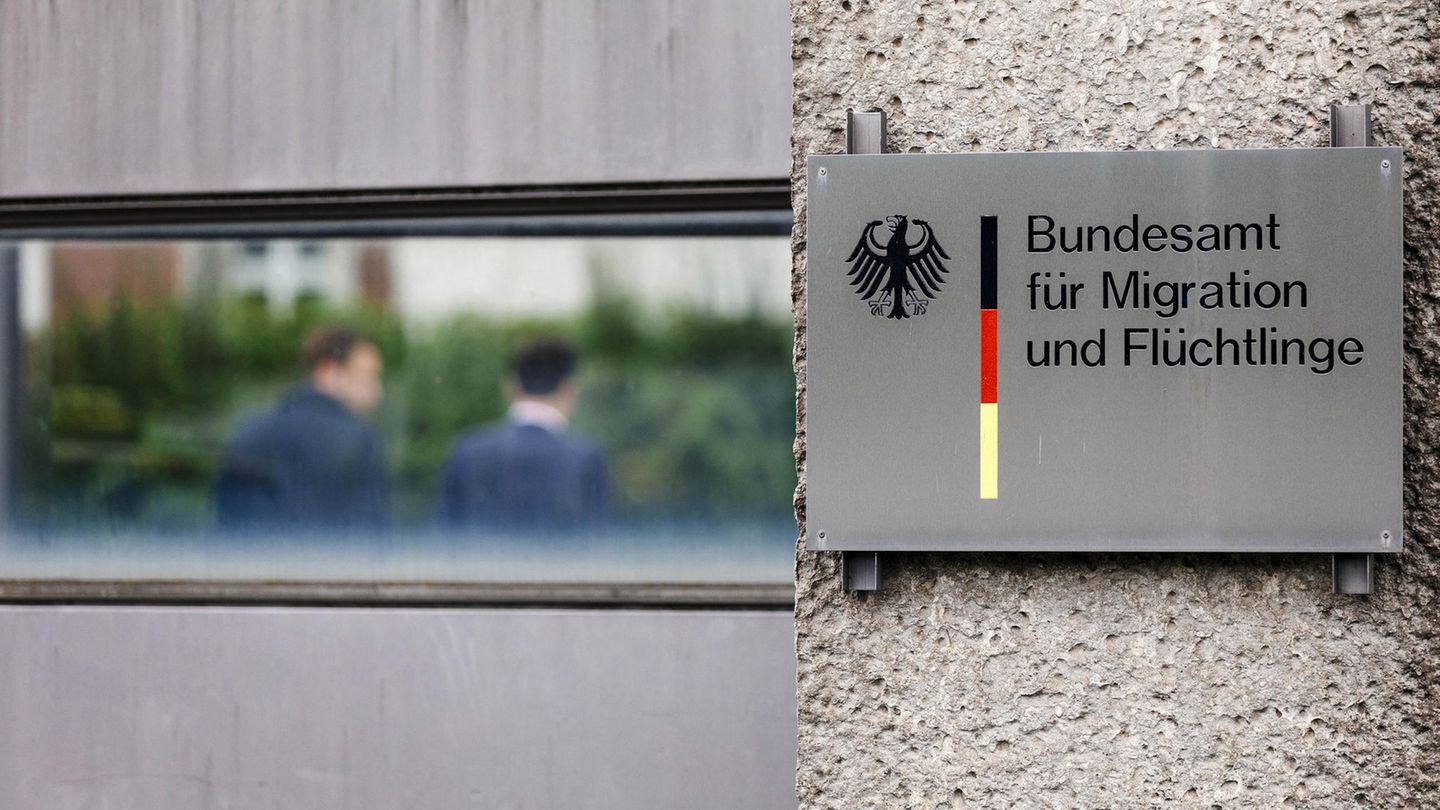CDU leader Friedrich Merz is not the only one who seems to be able to see some merit in the restrictive asylum policies of the Nordic EU states. But Denmark and Sweden are only partially suitable as role models.
When Friedrich Merz declared the traffic light coalition’s asylum policy a total failure, the CDU leader also cast a demonstrative glance northwards to underline the alleged despondency of the federal government.
“The whole system is no longer working properly,” the CDU leader said on Tuesday, adding that Germany has a “quantitative problem” in limiting irregular migration that can no longer be controlled. But it can be solved, says Merz. Sweden and Denmark have managed it, after all. Why not us?
For a long time, Denmark and Sweden were criticized for their low standards in asylum policy. Now the view is different, even in Germany. The murderous knife attack in Solingen, in which a rejected asylum seeker from Syria allegedly killed three people, has reignited the debate about a tougher approach to asylum policy.
The two EU states are now being used as evidence of how irregular migration can be significantly limited and deportations to Afghanistan can also be carried out. These are goals that the traffic light coalition in Berlin is also pursuing. So why don’t we do what Sweden and Denmark do?
Because the Nordic countries are only of limited use as a blueprint for Germany. A direct comparison is difficult – politically, but also legally and geographically.
The principle of deterrence
For years, Denmark and Sweden have recorded a more or less continuous decline in the number of asylum seekers, and in Sweden this year the lowest number of asylum seekers is expected since 1997. The downward trend for both countries can be summed up as follows: Sweden and Denmark are committed to being as unattractive as possible for asylum seekers – and are willing to accept humanitarian hardships to do so.
“Sweden does not shy away from pushing the boundaries of what is legally permissible in order to send a clear deterrent signal,” says Bernd Parusel, migration scientist at the Swedish Institute for European Policy Studies (SIEPS) in Stockholm, the star“In Sweden, the aim is to abolish everything that is not mandatory under international and European law.”
The Swedish government had already introduced a more restrictive migration and asylum policy at the end of 2015, and the current liberal-conservative coalition has intensified this course. For example, the already low social benefits for asylum seekers have not been increased since 1994, family reunification has been made more difficult, and labor migration has been drastically restricted.
The result: Sweden is no longer seen by refugees as a country that is willing to accept refugees, “where people seeking protection are welcome, wanted and can integrate well,” says migration researcher Parusel. Other EU states, such as Germany, are still perceived as willing to accept refugees. One could also argue that Sweden is pursuing a rigorous course – at the expense of other EU states, which are instead taking on the responsibility.
“But Sweden also benefits from its geographical peripheral location in Europe,” says Parusel. Several EU states control their Schengen borders – including Germany – so it is more difficult for asylum seekers to reach Sweden by land without being registered or stopped. This is also part of the answer to CDU leader Merz’s question as to why Sweden can do it in contrast to Germany – even though the country has “large, long external borders,” as the opposition leader emphasized. The Swedish border is simply more difficult to reach.
“You are unwanted. Accept that you have no future in this country”
Denmark is also trying to cultivate the image of not being a pleasant place for asylum seekers. Under the impression of the refugee movement in 2015/2016, triggered by the civil war in Syria, the then right-liberal government passed extensive legal tightening measures.
For example, the police were allowed to confiscate valuables from asylum seekers worth around 1,340 euros or more. Family reunification was made more difficult and the requirements for a residence permit were tightened. Cash benefits were reduced and converted into benefits in kind. Since then, asylum seekers have only been allowed to live in asylum centers and must wait there for a decision on their application. Further tightening followed in 2023: The government led by the Social Democrats decided that asylum seekers could lose their residence status if they go on vacation in their home country.
The fact that Denmark can take a tougher approach to asylum policy than Germany, for example, is due to the “opt-outs” that the country secured as part of its integration into the EU. Denmark is not bound by EU law on asylum and immigration; the Asylum Procedures Directive, for example, does not apply here. Denmark is also not bound by the Dublin Regulation, although it has negotiated a separate agreement on the matter. Nevertheless, Denmark is bound by the UN Refugee Conventions, which it has ratified and on which the EU rules are based.
The hard line seems to be having an effect, at least in terms of the numbers. As of July 31 of this year, 1,268 asylum seekers were registered. In the whole of 2023, there were almost 2,500, according to the Danish Ministry of Immigration and Integration. However, the restrictive course is also being strongly criticized, for example by the Danish Institute for Human Rights. The strict immigration laws are putting the human rights of refugees and foreigners under pressure. Rejected asylum seekers, tolerated persons and former refugees whose residence permits have been revoked are particularly affected.
There is also clear criticism of the so-called “departure centers” such as Kærshovedgård, Ellebæk or Sjælsmark, where rejected asylum seekers are housed. The conditions there are described as prison-like. The European Committee for the Prevention of Torture (CPT) criticized the conditions in Ellebæk as unacceptable after a visit in 2019 and compared them to prison conditions in countries such as Russia. But that is obviously the intention. “Places like Kærshovedgård should not be designed to make people want to stay here in Denmark,” says Minister for Foreign Affairs and Integration Kaare Dybvad Bek, a Social Democrat, defending the facility. “They should make it clear: you are not wanted. Accept that you have no future in this country.”
A role model for Germany? This is something that needs to be carefully considered, warns migration researcher Parusel, referring to Sweden. Many of the restrictive measures have a “dark side”.
“If you only grant protection for a limited period of time, leaving refugees in uncertainty and perhaps making it more difficult for their families to join them, then that can have a negative impact on the integration that you actually want to improve,” says the expert. Furthermore, from a “control perspective” it is not necessarily desirable to take away the housing and social benefits of rejected asylum seekers if they do not leave voluntarily. Often you then no longer know where the people are.
Deport to Afghanistan?
Not only CDU leader Merz, but also his general secretary Carsten Linnemann believe that Sweden could be an example when it comes to deportations to Afghanistan. “Sweden shows that it can be done,” he wrote in a guest article for the “Welt” newspaper after an Afghan man fatally attacked a police officer in Mannheim. “Last year, several people were deported from there directly to Afghanistan for criminal offenses.”
The traffic light coalition is currently looking for ways to legally and practically enable the deportation of criminals to Afghanistan. Repatriations have been suspended since August 2021, at the time in response to the Taliban’s seizure of power. To this day, Germany does not recognize the Taliban government, so there is no cooperation on deportations.
But that also applies to Sweden. But people are still being deported to Afghanistan – or are they?
Since the beginning of the year, Sweden has not carried out any deportations to unsafe countries such as Afghanistan, reports the “Handelsblatt” newspaper, citing the Swedish immigration authorities. Last year, according to official information, five Afghans who had committed crimes were deported to their homeland. Apparently via a detour: from Sweden to Uzbekistan, and then flying on to Kabul – after all, there is no official cooperation with Afghanistan. The German government is also currently in negotiations to carry out deportations via neighboring countries.
Repatriations are generally difficult to implement in Europe, says migration researcher Parusel. Many countries are not safe, others do not want to take back their citizens, and sometimes there is a lack of information about the origin of the asylum seekers. “With a lot of staff and money, you can certainly make some progress,” says the migration researcher, “but I cannot imagine that repatriations will work perfectly in the foreseeable future.”
Source: Stern
I have been working in the news industry for over 6 years, first as a reporter and now as an editor. I have covered politics extensively, and my work has appeared in major newspapers and online news outlets around the world. In addition to my writing, I also contribute regularly to 24 Hours World.




